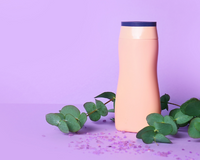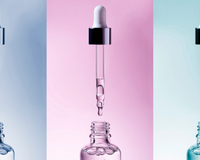Where do ingrown hairs come from?
Ingrown hairs favor hair removal methods, regardless of the method chosen. Waxing, for example, tends to thin and thin the strands. When the latter grow back, they fail to pass through the epidermis and continue to grow under the skin. This phenomenon causes the appearance of balls or buttons. A manual or electric razor can also promote ingrown hairs on the legs or bikini line, as these devices cut the hair without removing the root. The inches retract and grow back thicker but in the wrong direction. Sometimes it is the same shape of the hair that prevents it from growing naturally. The ingrown hair serums are more common because the hairs in this area are curly or frizzy.
THE CAUSES:
HAIR REMOVAL TECHNIQUES
The hair removal technique you use can be a factor in the formation of ingrown hairs.
Indeed, waxing and electric epilator are techniques that aim to pull out the hair and weaken it. The new hair is then thinner and the risks of it not being able to pierce the dermis are higher. Adding to this is that it has no set trajectory since the old one was torn off.
Double or triple-blade shaving disrupts the path of the hair. Indeed, the first blade pulls the hair so that the second cuts it, and often it is against the flow that it does so, which causes the deviation of the path of the hair initially planned.
THE NATURE OF THE HAIR AND SKIN
Curly hairs are prone to hair formation under the skin because they grow in a corkscrew and get stuck more easily under the dermis.
The thicker the skin, the more it is prone to ingrown hairs because the hair cannot pierce the dermis.
A BATTERED EPIDERMIS PROMOTES THE APPEARANCE OF INGROWN HAIRS
Inadequate skin care can trigger the formation of hair under the skin. The epidermis is continually renewing itself, which leads to the appearance of dead skin. If this dead skin has not undergone removal and the skin is not moist, it blocks average hair growth.
REPEATED FRICTION
When the skin is put through friction, such as clothing, the hair is sent to its initial trajectory.
Ingrown hairs: how to avoid their appearance?
The good news, it is able to prevent the formation of ingrown hairs! Here are the secrets.
ADOPT AN ADAPTED SKINCARE ROUTINE
- Exfoliate the skin 1 or 2 days before waxing with a gentle exfoliation or a hair glove once or twice a week maximum to remove dead cells. This helps to refine the skin and allow the hair to pierce the dermis more easily. Then apply hair serum.
-
Daily moisturize the body to maintain elastic skin. Creams and lotions based on salicylic acid or fruit acids are particularly recommended because they help soften the skin and refine the skin texture.
BETTER PRACTICE YOUR HAIR REMOVAL TECHNIQUE
Before epilation, it is necessary to disinfect the area to be epilated and the equipment used to prevent any proliferation of bacteria. It may be useful to take a hot shower or bath to open the skin's pores.
After waxing, your beauty routine will involve applying a post-depilation cream to reduce the feeling of discomfort and a moistened alum stone on the depilated area to soothe and cleanse the skin.
OPT FOR LASER HAIR REMOVAL
If the ingrown hairs persist and resist, it is possible to switch to laser hair removal. This almost final technique consists of destroying the hair bulb. The ingrown hair phenomenon then attenuates or even disappears as the hair is undergoes removal. Bikini line hair removal is the one that causes the most ingrown hairs, and laser hair removal is beneficial in this area.
Note that a doctor must perform this hair removal technique.
Gently remove ingrown hairs
It is essential to treat the hairs under the skin because they cause inflammation and can become infected. In some cases, a cyst may appear. If you notice a lesion's appearance that looks like an ingrown hair, see a healthcare professional. This will make a diagnosis and assess the need for treatment. Hair serums exist to remove the follicles under the skin before they ignite or become infected:
The hurting area can be regularly disinfected with an antiseptic product.
Green clay poultices and steam baths help the hairs under the skin to come out.
The use of non-greasy moisturizers helps to soften the skin so that the hairs pass through the epidermis more easily.
We do not recommend extracting the hair located under the skin using tweezers or any other instrument.
Products against hair under the skin
Specific products act to prevent ingrown hairs and promote their elimination. They work on hair and skin and is in use before and after each depilation for optimal results.
Creams against ingrown hairs
Creams against ingrown hairs work at different levels to optimize hair regrowth:
They are well off with keratolytic (or exfoliating) agents, which help refine the skin and remove calluses.
These hair serums slow down hair growth and promote healthy growth.
They moisturize and soften the skin while treating the pimples present with antiseptic agents.
Essential oils
Essential oils work in synergy to treat ingrown hairs and prevent their reappearance. Thanks to their soothing, antiseptic, and healing properties, they assert themselves as an adjunct treatment for ingrown hairs. Several essential oils can help you solve hair removal problems:
Lavender essential oil is relaxing, soothing, and healing. It can be applicable to lesions after undergoing dilution in vegetable oil.
Associated with black seed oil, essential oil of tea tree (or tea tree) disinfects pimples or cysts while reducing inflammation.
Geranium essential oil tightens pores and limits the secretion of sebum, which can hamper hair growth.
Preventive care
If you've successfully removed your ingrown hairs, you may want to seek preventative care to prevent their recurrence. The regular use of scrubs or exfoliating care in the areas concerned helps to refine the skin and limits the risk of hair under the skin. Anti-regrowth oils also have an action on ingrown hairs, provided they are applied after each depilation. If you use a razor, it is recommended to respect the direction of hair growth and to avoid friction that affects their natural trajectory.
Ingrown hairs serums are common after waxing or razor use in both women and men. Specific treatments help eliminate ingrown hairs and prevent their reappearance.









